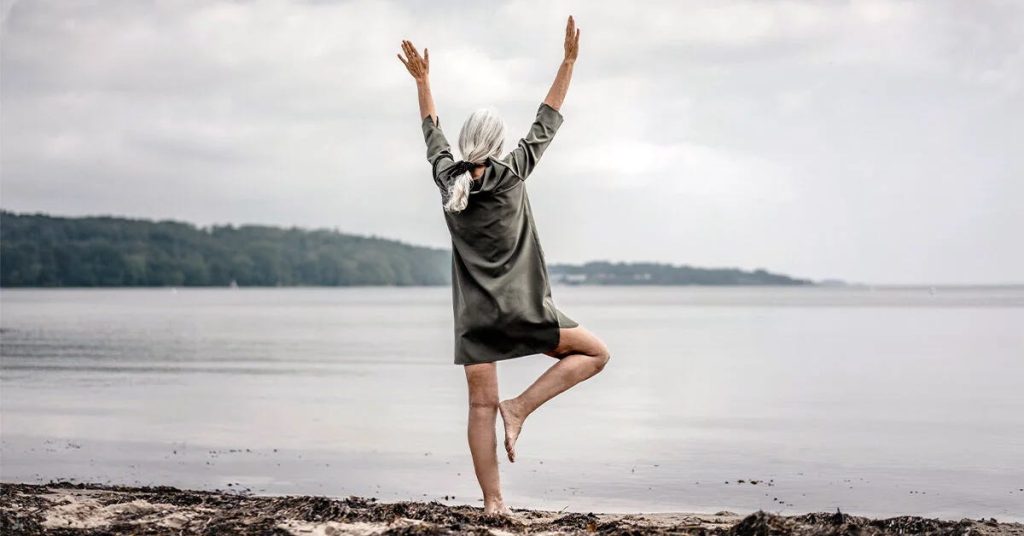
The holiday season is upon us, and for many people, this may involve parties and family get-togethers, holiday shopping in busy stores and crowded parking lots, rainy or snowy days, and slippery sidewalks. Although this festive time of year can be full of joy, it can also pose particular challenges to those who may have difficulty walking or have impaired balance.
The thought of navigating unfamiliar environments, loud sounds, crowds, and inclement weather can result in a fear of falling leading to apprehension about leaving the house and engaging in the community during these times.
At CIONIC, we are on a mission to help our community improve mobility, both through bionic clothing with the Cionic Neural Sleeve, as well as through our knowledge of the mechanics of gait and mobility.
Today, we are sharing some of our favorite exercises for improving gait and balance. Research shows that gait and balance exercises can reduce falls and improve confidence with mobility. The best part of these exercises is that many of them can be performed safely in the comfort of your home. So while you are keeping warm inside this holiday season, here are six exercises to improve your gait and balance.
Exercises to improve gait
1. Standing Marches
Standing marches can increase hip flexor strength leading to increased toe clearance during the swing phase of gait as well as increased single-leg stability for the stance phase of gait. These changes can lead to overall improvements in activities of daily living.
Begin by standing facing a counter or tabletop. You may also stand sideways for increased knee clearance. Lightly place your hands on the stable surface to maintain balance. Stand tall, engage your abdominal muscles, and lift one leg up and then slowly lower. Repeat on the other side and continue for 10 repetitions on each side.
Progress the exercise by removing one or both hands from the counter or tabletop to challenge balance, adding ankle weights to increase strength, or closing your eyes to improve proprioception.
2. Sidestepping
Sidestepping can improve the activation of the gluteus medius muscles. These muscles are important for providing stability of the hip and pelvis during walking.
Begin by standing facing a counter or tabletop. Lightly place your hands on the stable surface to maintain balance. Stand tall, engage your abdominal muscles, and step to the side with one leg and follow with the other. Repeat several times and then reverse direction.
Progress the exercise by removing one or both hands from the counter or tabletop to challenge balance or by adding an exercise band around the lower leg to increase strength.
3. Backward Walking
Backward walking can improve overall balance and walking speed and strengthen the quadricep muscles which aid in providing stability to the leg during the stance phase of gait and can result in a longer stride.
Begin by standing sideways next to a counter or tabletop. Lightly place your closest hand on the stable surface to maintain balance. Stand tall, engage your abdominal muscles, and walk backwards while maintaining contact with the counter or tabletop. Turn around and reverse direction.
Progress the exercise by removing your hand from the counter or tabletop to challenge balance or by adding ankle weights to increase strength.
4. Standing with a Narrow Base of Support
Standing with a narrow base of support can improve gait, balance, and walking stability.
Begin by standing facing a counter or tabletop. Hold on to the surface for support if needed. Bring your feet together. They may be slightly separated if needed for balance. Stand tall, engage your abdominal muscles, and hold the position for 30 seconds.
Progress the exercise by removing one or both hands from the counter or tabletop to challenge balance, closing your eyes to improve proprioception, or by slowly turning your head and neck from side to side to train your vestibular system.
5. Tandem Stance
Tandem stance can improve proprioception, particularly at the ankle which is important for maintaining balance while walking.
Begin by standing sideways next to a counter or tabletop. Lightly place your closest hand on the stable surface to maintain balance. Step your right foot directly in front of your left foot (heel to toe).
You may also stand with your feet staggered or slightly separated if needed for balance. Stand tall, engage your abdominal muscles, maintain equal weight on both feet with knees slightly bent, and hold the position for 30 seconds. Repeat with your left foot in front of your right foot.
Progress the exercise by removing your hand from the counter or tabletop, closing your eyes to improve proprioception, or by slowly turning your head and neck from side to side to train your vestibular system.
6. Single Leg Stance
Single leg stance can help improve balance, strengthen the muscles needed for stability during gait, and reduce the risk of falls.
Begin by standing facing a counter or tabletop. Lightly place your closest hand on the stable surface to maintain balance. Stand tall, engage your abdominal muscles, lift your right foot off the ground, and stand on your left leg for 30 seconds. Repeat by standing on the right leg for 30 seconds.
Progress the exercise by removing one or both hands from the counter or tabletop to challenge balance, closing your eyes to improve proprioception, or by slowly turning your head and neck from side to side to train your vestibular system.
So, now that you have some exercises to improve gait and balance, the next thing to do is to put all the components together. Throw on a warm sweater, grab your assistive device (if you use one), invite a friend, and go for a walk!
Exercises Through Bionic Clothing
In addition to these exercises, if you are a CIONIC customer, you will also have access to a library of exercises through the Cionic Neural Sleeve App. The Neural Sleeve is the first system to address all four major muscle groups of the leg simultaneously.
In addition to gait support mode which provides real-time walking assistance using adaptive algorithms and functional electrical stimulation (FES), the exercises target each of those muscle groups to strengthen and recondition the body when you aren’t walking. These exercises include calf raises, toe raises, knee extension, and knee flexion.
Each exercise has three versions: EMG, timed, and unassisted. EMG exercises respond to your own muscle contractions. The system prompts you to perform the exercise three times without stimulation so the sensors can record your muscle contraction. Once this calibration phase is complete, the system responds automatically to your body, stimulating your muscles only when the sensors detect contraction.
The timed series provides stimulation to the selected muscle groups based on a second counter, and stimulation occurs whether or not you actively contract your muscles. You can adjust your stimulation settings and workout based on your individual needs and goals. With this series, it is recommended that you contract along with the stimulation if you are able to or imagine you are performing the movement if you are not able to contract the selected muscle group.
You also have the option of performing the exercises without any stimulation, if desired. This is helpful for individuals who want to practice how they are doing without stimulation.
Are there any exercises that you hope to see on the platform someday? Reach out to the CIONIC team and share your favorite exercises — we’ll be developing new exercise protocols in the future.





